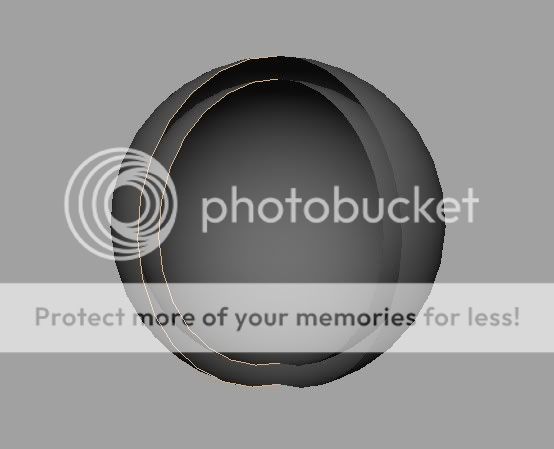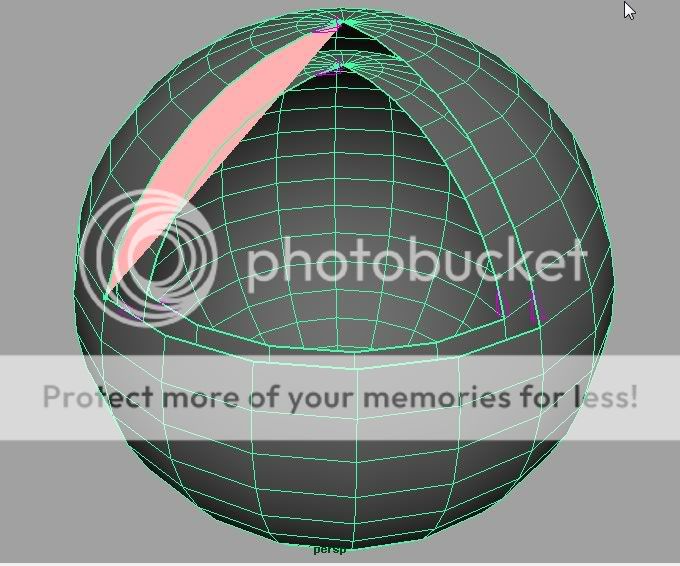sifidis, this is something i've done quite a few times :p
in this situation where you have two pieces of polygons that have been combined together and you want to fill the hole and the fill hole command just doesn't do what you want it to do, you can do the append polygon way of filling in the hole
if you do, you need to add more points along that big giant edge with insert edge tool and then just snaps verts and merge them
a more detailed explanation...
it doesn't matter if you start with polygons or NURBS, but i started in polygons because you can just delete 1/4 of the sphere easy enough
1. turn off two sided lighting (in the view port panel it's Lighting > Two Sided Lighting), this will quickly let you know when your normals don't agree with each other (normals are the direction the face is facing) by showing one side black and the other in the material you've assigned
take you polygon sphere and kill the faces you don't want
2. duplicate and scale inwards or outwards. Take the inner sphere and reverse the normals (Normals > Reverse)
3. combine (Mesh > Combine)
4. select Edit Mesh > Append Polygon Tool
5. click on a vertex on one of the sphere and follow the direction of the arrows... at some point click on a vertex on the inner sphere
6. hit enter. be lazy and go Mesh > Fill Hole
and now the fun part...
either Mesh > Clean up (reset settings) and then delete all the unnessery edges along that birdged gap and turn everything along there in to quads
or
go Edit Mesh > Split Polygon Tool and connect the verticies between the inner and outer sphere to make quads
make stuff quads or it might render funny

that's a "Ch" pronounced as a "K"
Computer skills I should have:
Objective C, C#, Java, MEL. Python, C++, XML, JavaScript, XSLT, HTML, SQL, CSS, FXScript, Clips, SOAR, ActionScript, OpenGL, DirectX
Maya, XSI, Photoshop, AfterEffects, Motion, Illustrator, Flash, Swift3D




 )
)













